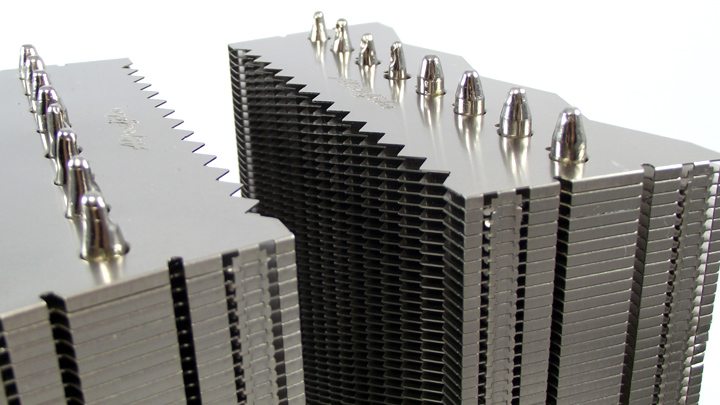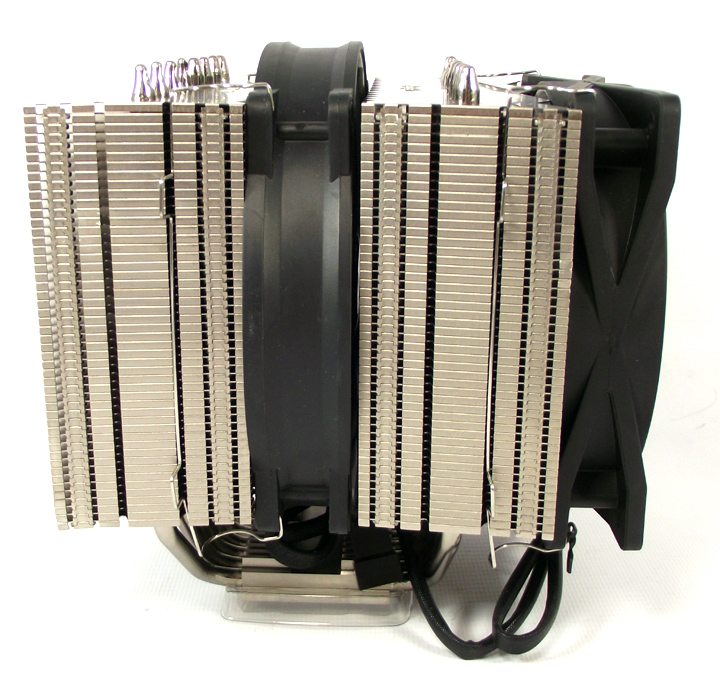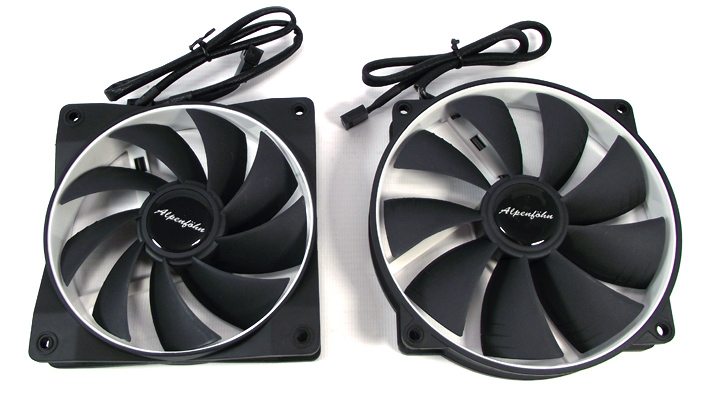Alpenföhn K2 Dual Tower CPU Cooler Review
Luke Hill / 13 years ago
As its name suggests, Alpenföhn claim that the “MnTal-Airflow Technology (Minimized noise Transfer at low Airflow Technology)” can reduce noise transfer when using lower speed fans. This engineering design is made possible by an “advanced finstructure” which influences airflow through the heatsink. Our testing will tell whether this design feature can catapult the K2 into the air cooling top spot.

A pair of trapezoid shaped towers reduces interference between the K2 and uppermost PCI expansion slots.

Serrated fins on the internal edge of each aluminium cooling tower offer airflow and pressure manipulation characteristics to improve performance with lower speed fans.

8 U-shaped 6mm copper heatpipes exit the highly reflective copper base entering each fin stack with equal distance between them. The equal separation of each heatpipe ensures that heat is more evenly transferred to the aluminium fin array reducing the chance of a ‘hot spot’ of heat-saturated aluminium being produced.

The fans are attached to the K2 heatsink via specific channels in the side of each cooling tower. With the front 120mm fan installed the K2’s width stretches to a RAM-blocking 154mm.

A pair of Alpenföhn’s Wing Boost fans in 120mm and 140mm variations supply the cooler’s airflow. The 120mm variant is rated for speeds of up to 1500 RPM at a maximum of 24.8 dbA while its 140mm partner can operate at up to 1100 RPM and 19.4 dbA.

Both fans use the highly versatile 4-pin PWM connection meaning that their speed can automatically changed by a motherboard. The 120mm fan connects directly to the motherboard’s 4-pin header before splitting the signal and sending it to the 140mm fan. This is an inventive method of connecting 2 fans to a single 4-pin PWM header, a method which prevents the requirement for a separate fan adapter.




















